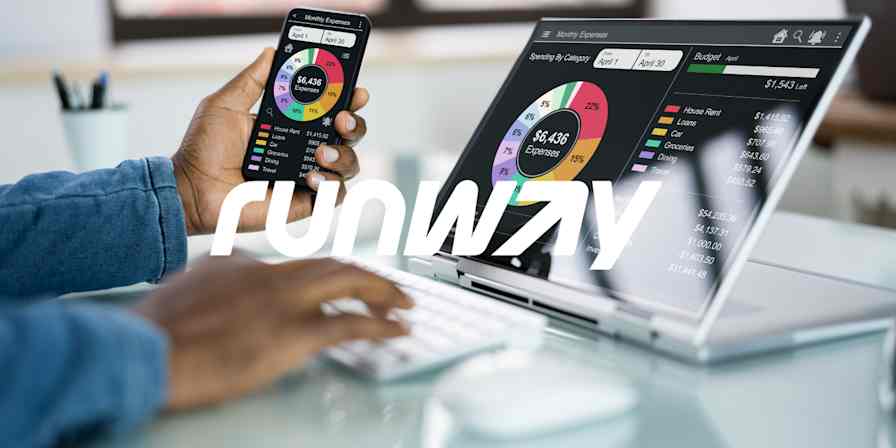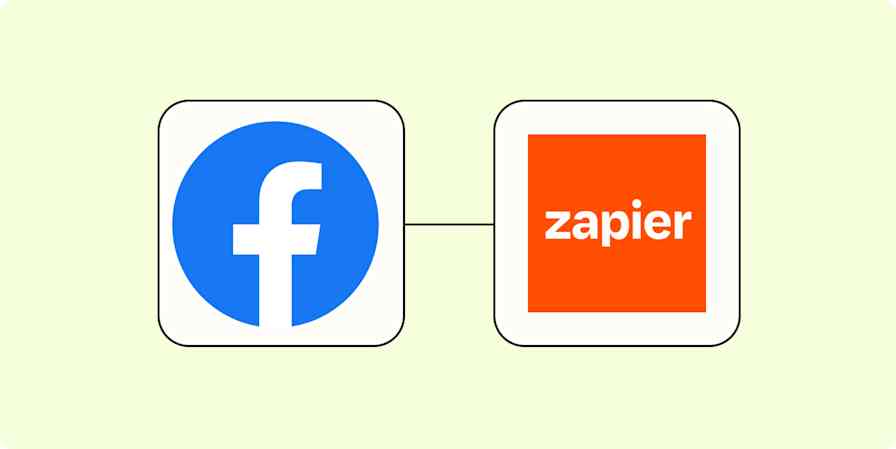Knowing your audience—who they are, what motivates them, and what they're looking for in a product—will make or break your business. Without that clarity, you're guessing, and guessing doesn't win customers.
That's where user personas come in. It's not just some marketing buzzword—user personas are a practical, proven way to better understand and speak to customers and potential customers. Whether you're planning a launch, refining your messaging, or looking to build something your customers will love, user personas can guide your decisions and help you stay on target.
I've spent a lot of time with user personas in my work as a marketer, and here, I'll walk you through how to create them—and how to use them to design better customer experiences and drive better results.
Table of contents:
What is a user persona?

A user persona is a profile of your average customer—or types of customers—and how they tend to behave. You're basically creating a fictional character to represent your customers, so it's definitely a generalization, yes, but it's a useful generalization for your business.
User personas are created using data, but they have names, goals, and experiences that affect how they interact with your business. They're part of a narrative, and their story helps you create better products, offer better services, and market better to your potential customers.
Segments vs. personas
Let's say you're developing a new accounting app. Your overarching audience is "accountants," but you actually have three distinct groups, or segments, of users:
Freelancers or small businesses who are inexperienced with bookkeeping. They're anxious about choosing a tool that will accurately prepare them for tax season, and they're often on a budget.
Established businesses with in-house accounting teams. They want a tool that will help their team work more efficiently, and they're willing to pay a fair amount for it.
Accounting firms who manage the books for their clients. They're willing to pay a premium for a streamlined, scalable tool.
If you sell a physical product, you can still segment. For example, if you own a running store, your segments might look a bit like this:
New runners who need a lot of guidance on which shoes to buy. They don't want to break the bank until they know whether they'll stick with running.
Seasoned runners who have more defined shoe preferences, but who might need both short- and long-distance shoes. They're willing to spend a bit more money.
Professional athletes with very specific needs based on their training programs. They're willing to pay a premium for new running tech.
You need a user persona for each of these segments that goes beyond the size of the business or level of expertise. And that's what distinguishes a user persona from a generic segment: personas go beyond basic information and drill into what shapes and motivates customer behavior. In the end, your persona will feel like a real, human person.
What are user personas good for?
User personas help humanize your customers. Instead of treating them as transactions or invoices, user personas let you understand your customers like the people they are—including their habits, their needs, and their struggles.
Understanding your customers so holistically can be a huge help in shaping the direction of your business. Personas can help you better understand how to onboard new customers, what services to upsell, and even which features you should strategically invest in. And if you're running a larger business with a dedicated sales and marketing team, you can even customize your sales pitch to each user persona—so you speak directly to them.
How to create user personas
Here are a few tips for creating personas that help you understand your customers.
Focus on data
Personas are useful generalizations—they tell you how your customers tend to behave. To keep them from becoming unhelpful stereotypes, you need to ground them in actual data.
A great place to start is with your sales data, because it's easy to segment into useful groups: people who spend a little, people who spend moderately, and people who spend a lot. By analyzing your transactions, you can start to make some inferences about buying patterns.
Customer support data is another rich trove of insights that can help you craft personas. For example, you can look at who tends to contact support the most, based on customer size or spend. If you notice that smaller customers tend to open more support tickets, that's a strong behavioral insight you can include in the user persona representing that segment.
If you're just starting out and don't have your own data, you can use existing data from your industry—AI tools like ChatGPT can help a lot with this, and some of your sales and customer support tools will have AI features built in.
Do some qualitative research
Hard numbers are a great place to start building out user personas, but they often don't capture the entire story. That's where qualitative research can be a huge help in creating personas that capture the humanity of your customers.
If you have an in-house sales team, for example, you can analyze qualitative data like CRM notes or sales call recordings. These can give you a more detailed picture of what your personas are looking for or the pain they're trying to solve with your product. And with the help of AI, the process of pulling out those qualitative insights can be a lot quicker.
To create an even more nuanced portrait of your users, you can also run user interviews or surveys. Both are great tools for persona-building because they let you go beyond raw demographic data and uncover deeper insights. For example, if you're running the accounting app we talked about earlier, you might ask questions like:
What do you look for in a great accounting app?
What competitors of ours have you tried? Why didn't you choose them?
What new feature would you be most excited about?
How was the onboarding experience? Are there any aspects of the product you're still not sure about?
And if you don't have existing customers, you might run a market research survey to learn about your potential customers.
Tell a compelling story
User personas should be a snapshot of your average users, but they shouldn't be so generic that they fail to help you make decisions. Think about each persona like the main character in a book—no one cares about a story with a boring main character. They want to read about someone with real feelings, quirks, and challenges to overcome.
That's why good personas are often semi-fictional: made-up characters grounded in real, specific facts. They have names, goals, and life experiences that shape how they interact with your business. For example, you might approach creating a user persona for your running store like this.
Name: Rory | What's her goal?
Rory is a new runner who signed up to run this year's Turkey Trot 5K with her friends. She needs to buy a pair of shoes that will carry her across her first finish line. |
Age: 33 | What's the main barrier to her achieving their goal?
She has no injuries, but she's never been fitted for a pair of running shoes—so she doesn't know what she needs. She feels overwhelmed by the number of options and intimidated by the prospect of choosing a shoe by herself. |
Running level: Newbie | How much is she willing to spend?
Her budget is about $150. |
"Rory" isn't a real person, of course; she's a fictional representation of the average new runner who walks into your store. But crucially, Rory isn't just a list of facts about new runners—she's a character in a narrative, and she evokes empathy. We're invested in seeing her succeed, which is the key to all truly useful personas; they make you want to better serve your customers.
If you're having trouble, you might want to get started with an empathy map to help you step into their shoes and dig into what they say, think, do, and feel.

Use AI
I've mentioned it a bit, but it's worth reiterating: AI can be a great brainstorming partner and tool for extracting insights. It can surface information from your existing tools, do online research, compile it quickly, and even give you sample personas. Here's an example of what ChatGPT gave me when I fed it some information about the fictional running store.

I spent about 20 seconds typing that prompt, so you can imagine how much better it would be if you fed it actual market research, more information about your product or service, and even some historical data. And if you use the AI built into your existing tools, it'll know even more about your business and be able to help you even more.
Making the most of your user personas
Serving your customers better is ultimately the goal. So don't let your personas languish as a nice little exercise; actively use them to guide your work and decision-making. Here are a few simple ways to incorporate personas into your business.
Always ask "Who is this for?"
Don't develop features, products, or campaigns in a vacuum. Make a point of always asking "How does this help Persona A?" or "What will Persona B's experience with this new offering be?" By focusing on how your plans map to your personas, you can make decisions that actually resonate with your customers—and increase revenue.
Customize your pitch
You can use personas to customize your sales and marketing materials: create sales battlecards targeted at different personas, build web pages that speak to specific persona pain points, and tailor your overall message so that it lands better with your target personas. If you're struggling to close high-value deals with larger businesses, for example, you can revisit your sales cycle through the lens of that user persona.
Tailor the complete customer journey
The true value of user personas comes when you use it to tie all your customer touchpoints together into a cohesive customer journey. For example, here's how you might create a full running store experience with Rory in mind.
Name: Rory | What's her goal?
Rory is a new runner who signed up to run this year's Turkey Trot 5K with her friends. She needs to buy a pair of shoes that will carry her across her first finish line. | How we help
When Rory walks into the store, she's welcomed warmly by the staff. She's offered a free gait analysis—and the staff recommend a couple shoes for her to try, based on her running goals. She's also told about our risk-free 30 day return policy.
Because of this tailored help, Rory feels much more confident in her shoe choice, and she purchases a pair of Brooks immediately. We slipped a flyer about our weekend beginner run club into her bag.
Three months later, she gets an email from the salesperson who helped her, reminding her to replace her worn-out shoes to prevent injury. |
Age: 33 | What's the main barrier to her achieving her goal?
She has no injuries, but she's never been fitted for a pair of running shoes—so she doesn't know what she needs. She feels overwhelmed by the number of options and intimidated by the prospect of choosing a shoe by herself. | |
Running level: Newbie | How much is she willing to spend?
Her budget is about $150. | In-stock shoes ideal for Rory
Brooks Ghost 15 Hoka Clifton 9 Saucony Tempus 2 Nike Pegasus 41 |
While the first part of this example focuses on building confidence (through helpful sales advice) and reducing risk (with the generous return policy) so that Rory makes an initial purchase, it doesn't stop there. It also includes steps to encourage customer retention and upsell.
Get closer to your customers with user personas
Personas are great for capturing your customers' underlying motivations and goals and then using them to shape and achieve your strategic objectives. But most importantly, user personas help you see your customers as real human people that you can foster genuine connections with.
Related reading:
This article was originally published in March 2017 by Genevieve Colman. The most recent update was in January 2025.









